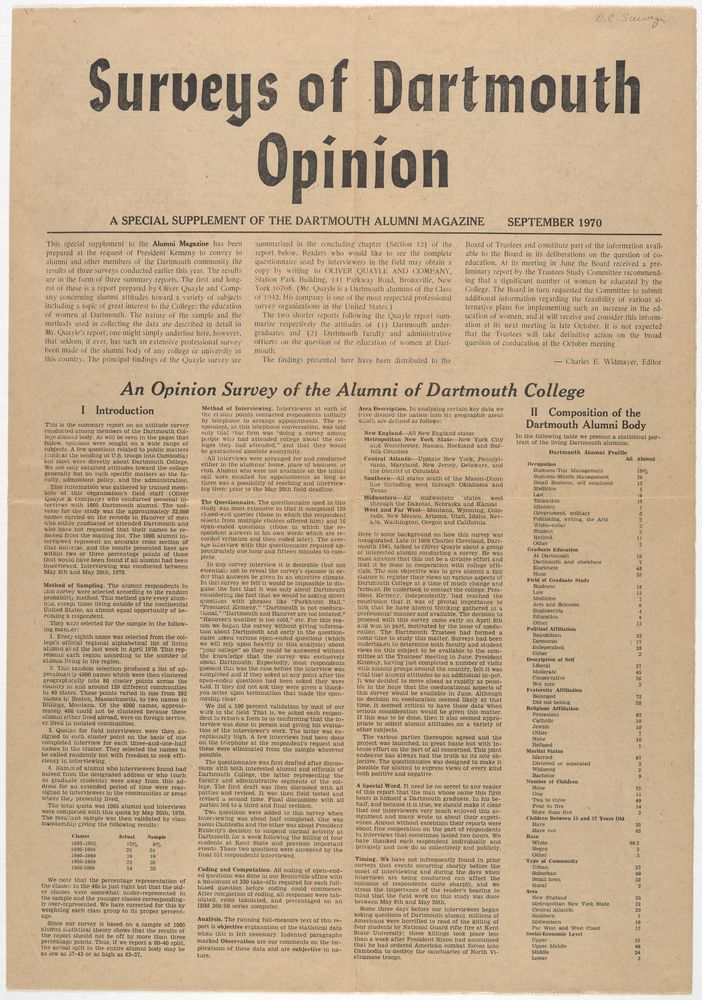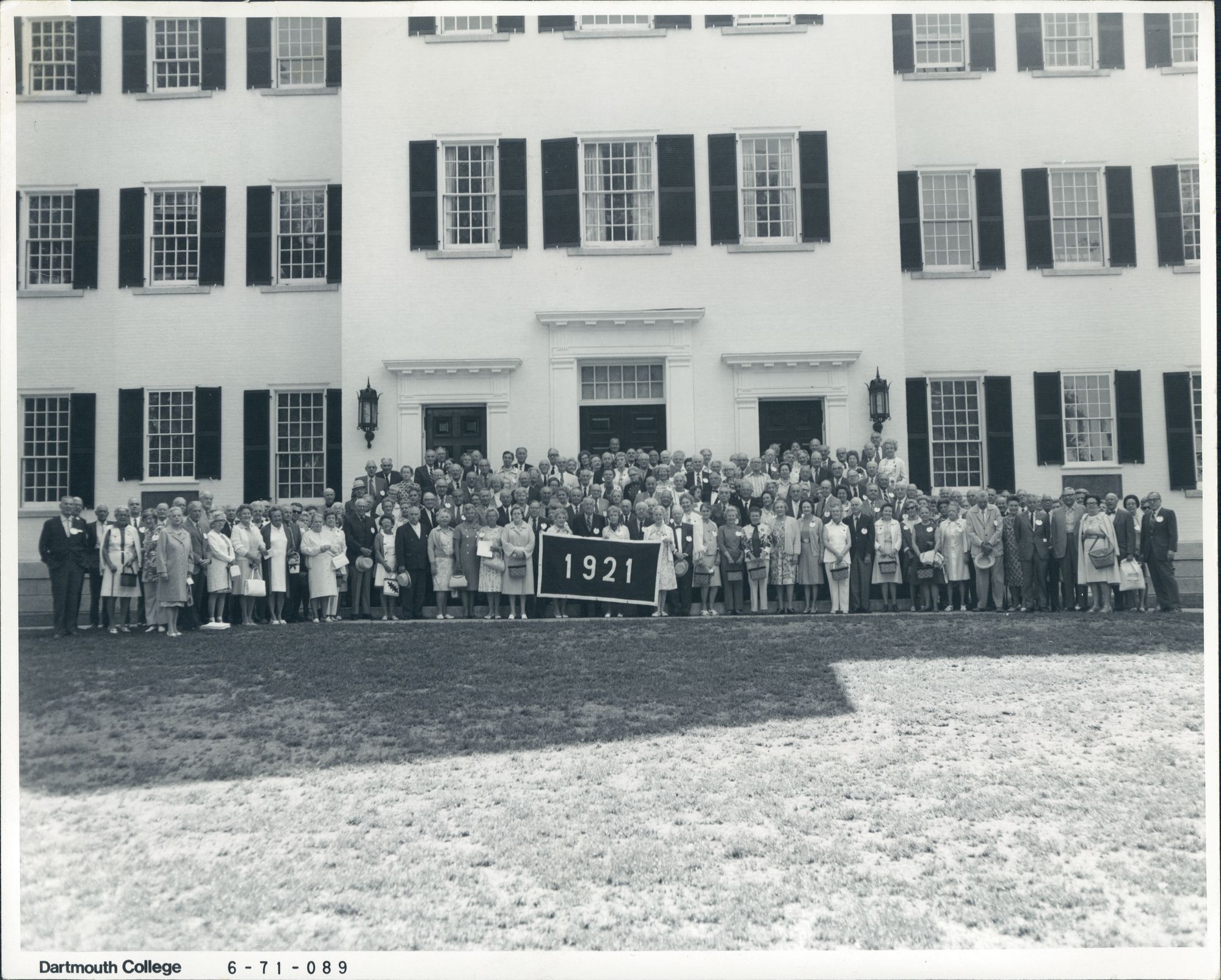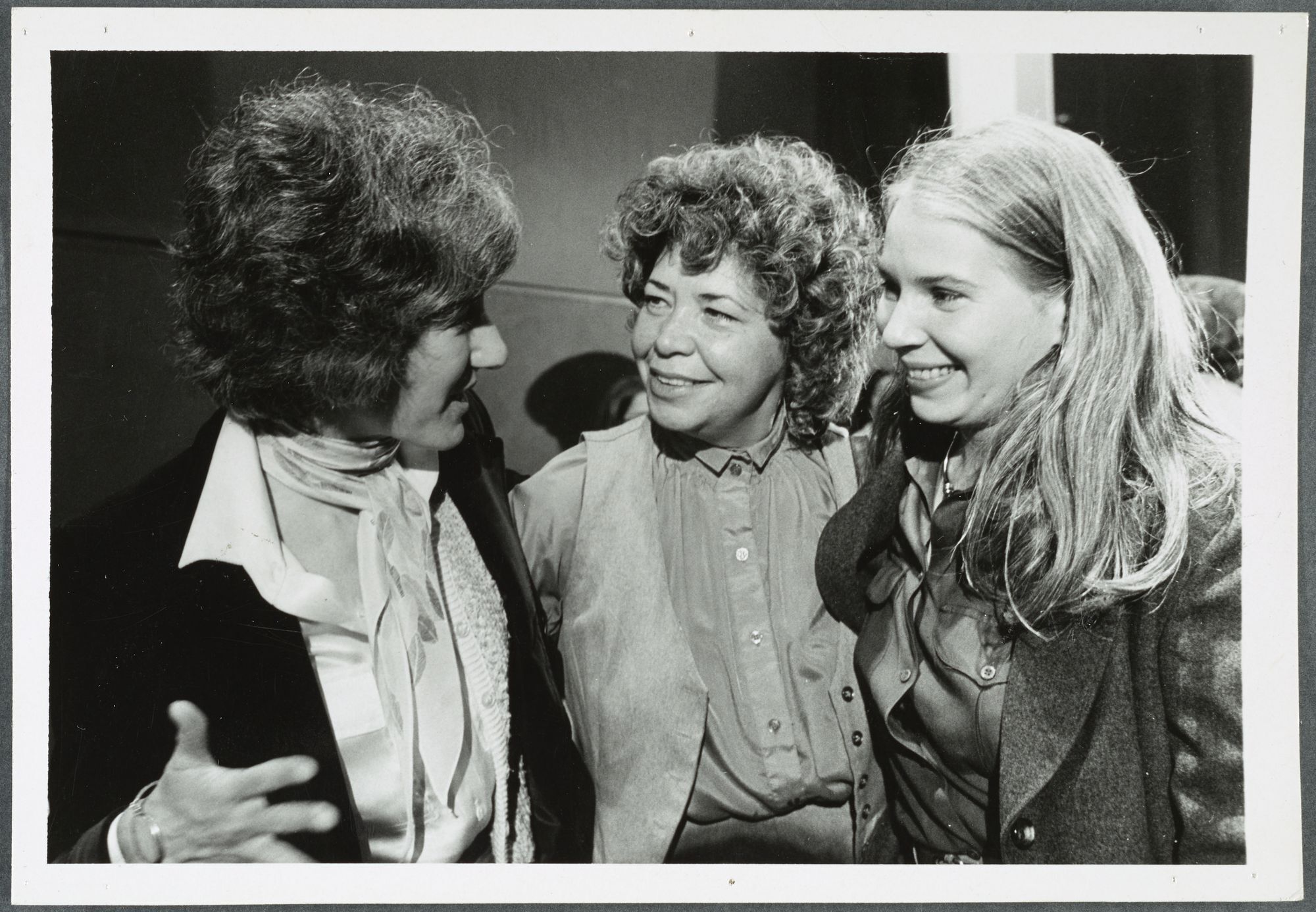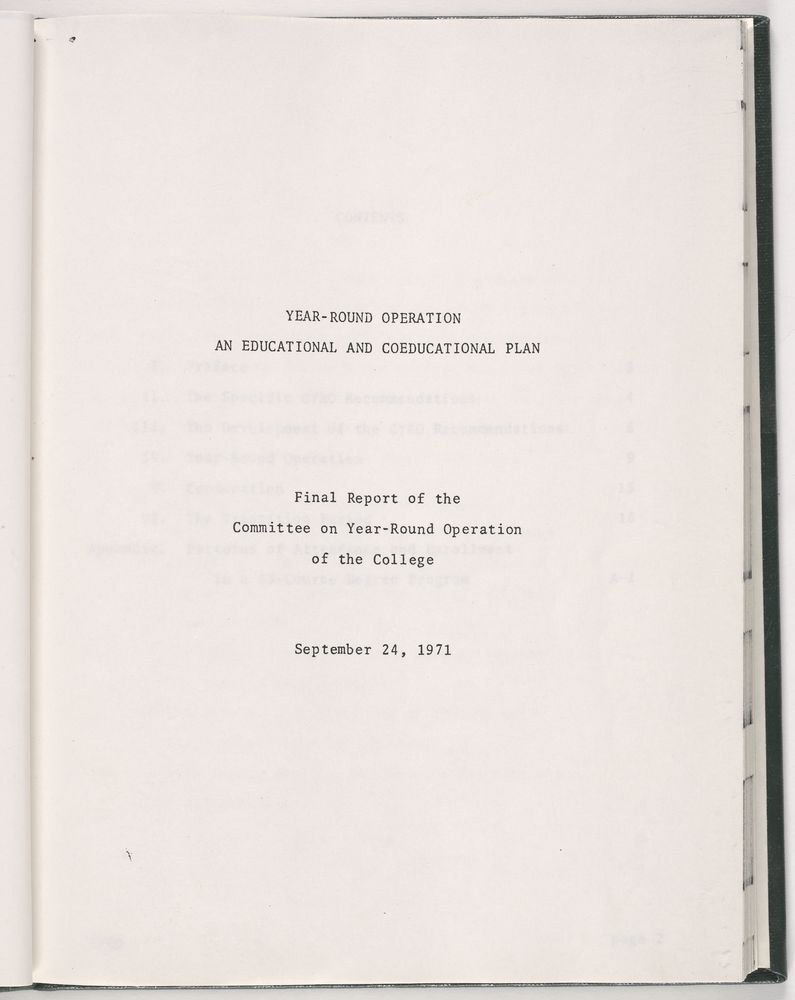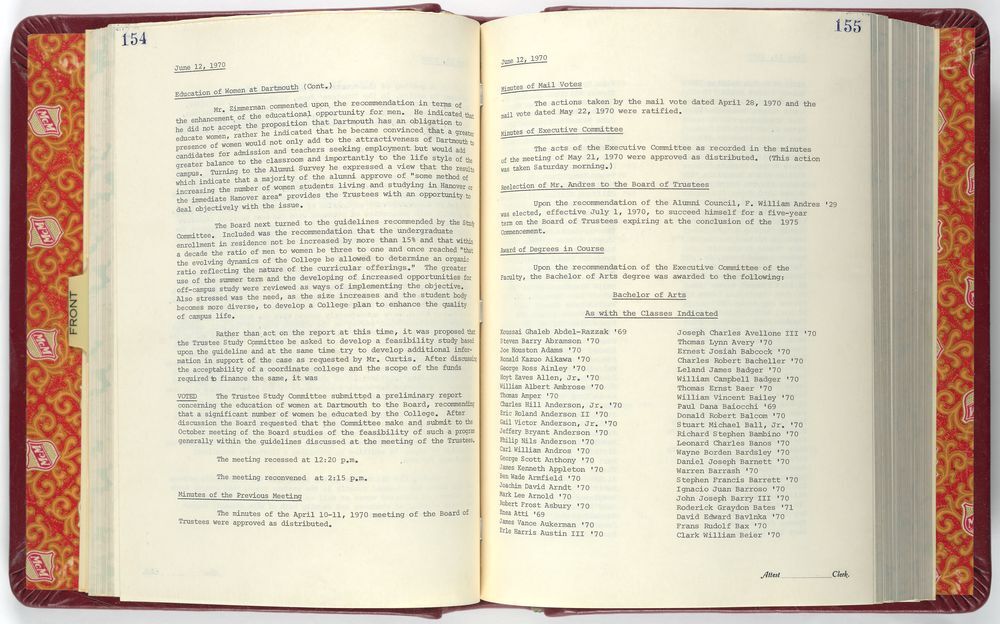The Writing on the Wall: President Kemeny Takes a Vote
John Kemeny immediately began to explore coeducation when he took over the Presidency in 1970. One of his first acts was to commission a survey of faculty and alumni to determine their views on coeducation. While the results showed deeply divided opinions, a slim majority of alums were in favor, with faculty more strongly supporting the change. The Board was less supportive, but also saw the handwriting on the wall.
Led by Charles Zimmerman, the new chairman of the Board, the Trustees threw their support behind an associated school model for coeducation, a school for women, think Radcliffe and Harvard. Over the course of the next seven months, the Board and the faculty debated and argued. With the date for the special November meeting for a vote looming, the outcome was still unclear. Kemeny later said that it was one of two times when he thought he might have to resign if the Board did not support his vision for the future of the institution. That’s how important he felt the move to coeducation was.
Previous: All Men All The Time: Dartmouth Before Coeducation -- Next: Arrival: September 5, 1972


